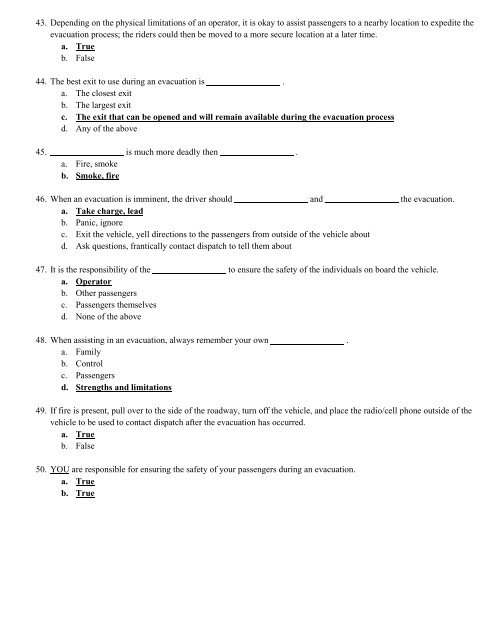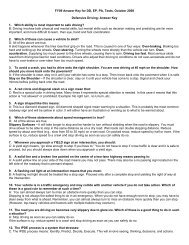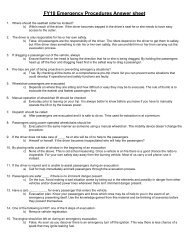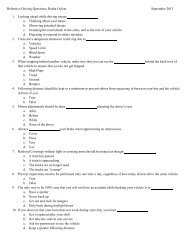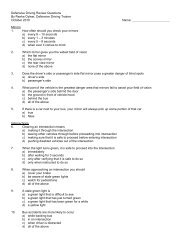RTAC Emergency Procedures Answer Sheet
RTAC Emergency Procedures Answer Sheet
RTAC Emergency Procedures Answer Sheet
You also want an ePaper? Increase the reach of your titles
YUMPU automatically turns print PDFs into web optimized ePapers that Google loves.
43. Depending on the physical limitations of an operator, it is okay to assist passengers to a nearby location to expedite the<br />
evacuation process; the riders could then be moved to a more secure location at a later time.<br />
a. True<br />
b. False<br />
44. The best exit to use during an evacuation is .<br />
a. The closest exit<br />
b. The largest exit<br />
c. The exit that can be opened and will remain available during the evacuation process<br />
d. Any of the above<br />
45. is much more deadly then .<br />
a. Fire, smoke<br />
b. Smoke, fire<br />
46. When an evacuation is imminent, the driver should and the evacuation.<br />
a. Take charge, lead<br />
b. Panic, ignore<br />
c. Exit the vehicle, yell directions to the passengers from outside of the vehicle about<br />
d. Ask questions, frantically contact dispatch to tell them about<br />
47. It is the responsibility of the to ensure the safety of the individuals on board the vehicle.<br />
a. Operator<br />
b. Other passengers<br />
c. Passengers themselves<br />
d. None of the above<br />
48. When assisting in an evacuation, always remember your own .<br />
a. Family<br />
b. Control<br />
c. Passengers<br />
d. Strengths and limitations<br />
49. If fire is present, pull over to the side of the roadway, turn off the vehicle, and place the radio/cell phone outside of the<br />
vehicle to be used to contact dispatch after the evacuation has occurred.<br />
a. True<br />
b. False<br />
50. YOU are responsible for ensuring the safety of your passengers during an evacuation.<br />
a. True<br />
b. True


